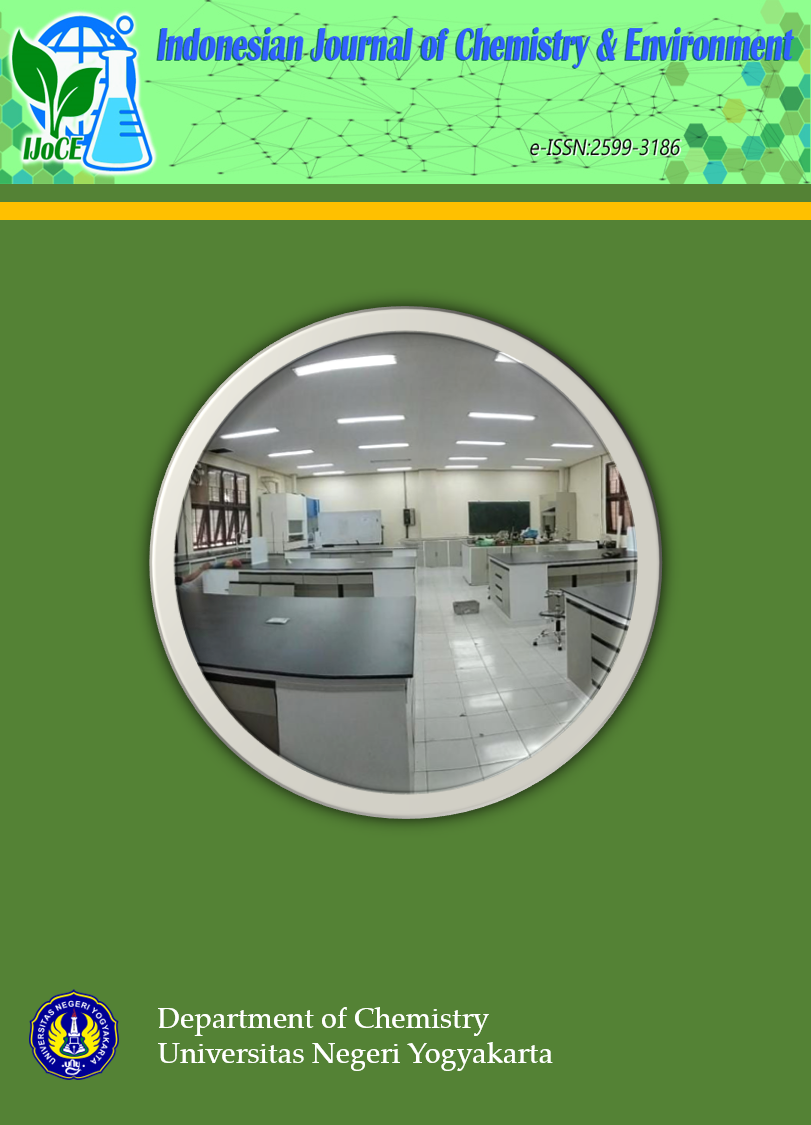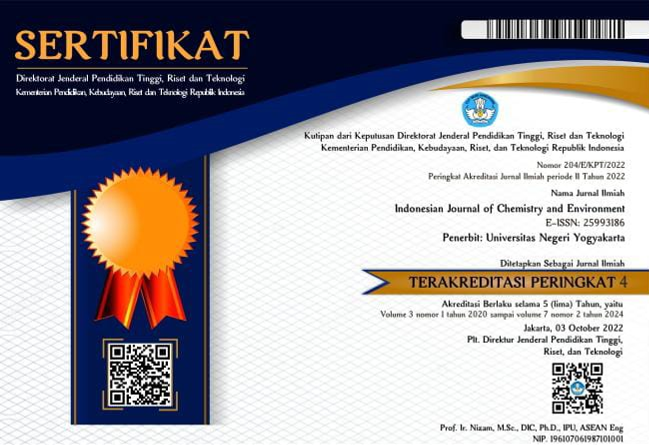Analysis of Total Reducing Sugar Content, Acidity Value, and Hydroxymethylfurfural (HMF) Content of Various Honey Types
DOI:
https://doi.org/10.21831/ijce.v1i1.20786Abstract
References
Buba, F., Gidado, A., Shugaba, A. (2013). Analysis of Biochemical Composition of Honey Samples from North-East Nigeria. Biochem Anal Biochem, 2(3),139. doi: 10.4172/2161-1009.1000139
Capuano, E., & Fogliano, V. (2011). Acryamide and 5-hydroxymethylfurfural (HMF): A Review on Metabolism, Toxocity, Occurrence in Food and Mitigation Strategies. Food Science and Technology, 44(4), 793 – 810. Doi: 10.1016/j.lwt.2010.11.002
Codex Alimentarius Commision. (2000). Draft Revised Standard for Honey at Step 8 of the Codex Procedure. Berlin.
Codex Alimentarius Comitte on Sugars. (2001). Codex Standard for Honey 12, revised Codex Standard of Honey. Berlin.
Indonesian National Standard. (2013). Honey (SNI 3545). Jakarta: Badan Standarisasi Nasional Indonesia.
Keppy, N. K., & Allen, M. W. (2009). The Determination of HMF in Honey with an Evolution Array UV-Visible Spectrophotometer. Retrieved from https://www.analiticaweb.com.br/newsletter/11/51864-UV-Furfural_Mel.pdf
Molan, P. C. (1999). The Role of Honey in The Management of Wounds. Journal of Wound Care, 8(8). doi: 10.12968/jowc.1999.8.8.25904
Nozal, M. J., Bernal, J. L., Toribio, L., Jimenez, J. J., & Martin, M. T. (2001). High-performance liquid chromatographic determination of methyl anthranilate, hydroxymethylfurfural and related compounds in honey. Journal of Chromatograph, 917(1-2), 95-103. Doi: 10.1016/S0021-9673(01)00702-6
Pita-Calvo, C., Guerra-Rodriguez, M. E., & Vazquez, M. (2017). Analytical Methods Used in The Quality Control Of Honey. Journal of Agricultural and Food Chemistry, 65(4), 690 – 703. Doi: 10.1021/acs.jafc.6b04776
Shobham, Chitluri, K.K., & Nayar, J. (2017). Physico-Chemical Analysis of Some Commercial Honey Samples from Telangana. Indian Journal of Nutrion, 4(1), 153. Retrieved from Open Science Publications database.
Tornuk, F., Karaman, S., Ozturk, I., Toker, O., Tastemur, B., Sagdic O., et al. (2013). Quality Characterization of Artisanal and Retail Turkih Blossom Honey: Determination of Physicochemical, microbiological, bioactive properties and aroma profile. Industrial Crops and Products, 46, 124-131. doi: 10.1016/j.indcrop.2012.12.042
Downloads
Published
How to Cite
Issue
Section
Citation Check
License
Authors who publish with this journal agree to the following terms:
- Authors retain copyright under a Creative Commons Attribution–ShareAlike License (CC BY SA) that allows others to share: copy, and redistribute the material in any medium or format, Adapt: remix, transform, and build upon the material, for any purpose, even commercially.
- Authors are able to enter into separate, additional contractual arrangements for the non-exclusive distribution of the journal's published version of the work (e.g., post it to an institutional repository or publish it in a book), with an acknowledgement of its initial publication in this journal.
- Authors are permitted and encouraged to post their work online (e.g., in institutional repositories or on their website) prior to and during the submission process, as it can lead to productive exchanges, as well as earlier and greater citation of published work.










